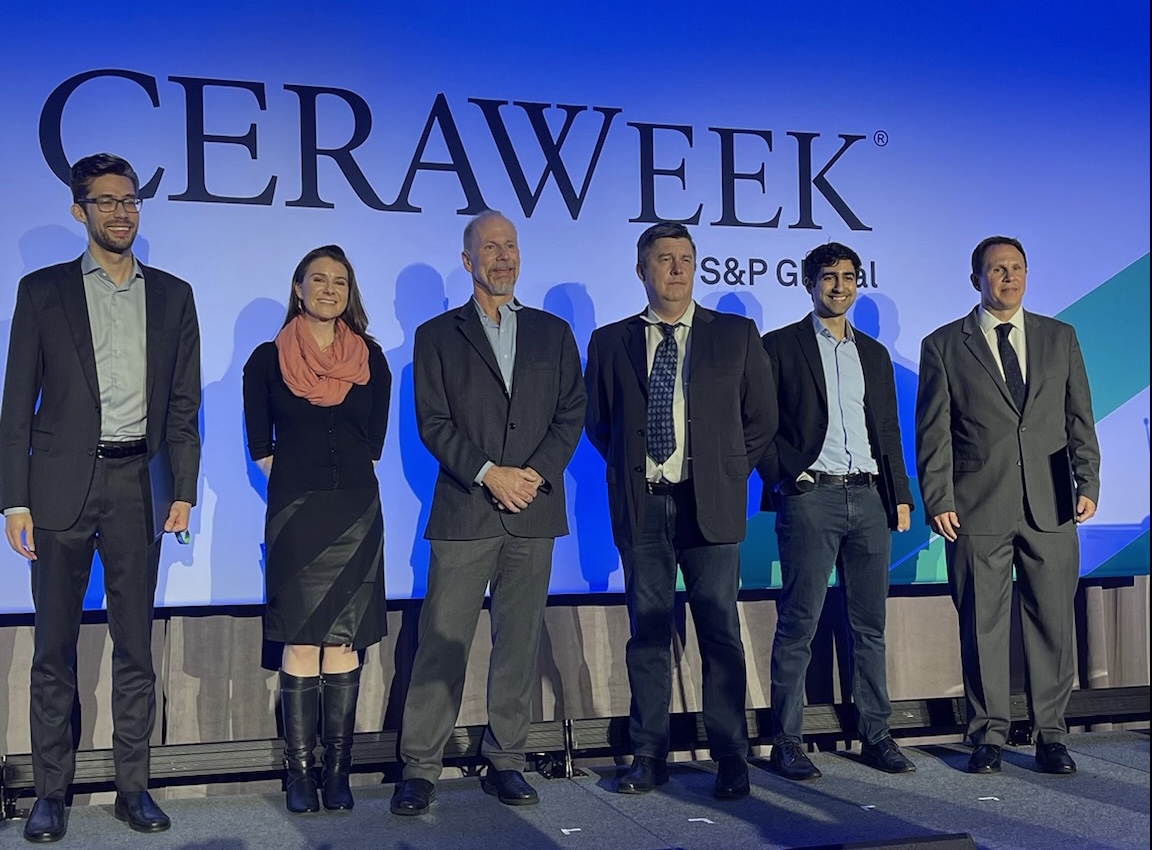Software Startup Wins First-Ever Energy Transition Pitch Competition at CERAWeek
Published Mar 16, 2022 by Brina Morales
An edge computing software startup won the first-ever Energy Transition Ventures Day pitch competition hosted by the Partnership’s Houston Energy Transition Initiative in partnership with Greentown Labs, Halliburton Labs, The Ion, Rice Alliance and Chevron.
The competition, which was held during CERAWeek, was an opportunity for the Partnership to convene key energy industry members and investors and spotlight innovative energy transition startups in Houston and beyond.
The startup Parasanti beat 11 other companies for the top prize: an invitation to participate in the Chevron Technology Ventures catalyst program.
“I was elated. It’s such an incredible opportunity,” said Carrie Horazeck, President of Parasanti Commercial.
Parasanti, founded in 2019, is an edge computing service that provides real-time analytics to on-the-ground operators in remote and extreme environments that have little to no internet connection. That technology allowed Parasanti to succeed in the federal sector by working closely with the U.S. Department of Defense on tactical deployments for soldiers and other projects. In May 2021, the company launched its commercial branch to support operations and maintenance personnel on oil and gas wells, wind and solar farms, and distributed energy resources hubs for utilities.
“Anytime you have a guy or gal in a hard hat trying to make real-time decisions with data when they don't have the internet and can't rely on getting the data back to the cloud – that’s where we come in,” Horazeck said.
Though based in Austin, Parasanti is no stranger to Houston and has a relationship with both Halliburton Labs and Greentown Labs. Horazeck said their work in Houston focuses on “accelerating digital solutions for reducing the impact of oil and gas operations on the environment” and enhancing its wind and solar SCADA systems. The company hopes to grow its commercial branch by advancing and developing energy solutions in the city leading the energy transition.
Houston “offers a unique opportunity to tap into the knowledge of the industry's history while simultaneously accessing resources to build the industry's future. The level of collaboration between accelerators/VCs/ and incubators here is incredible,” Horazeck said. “There is just a different energy in the air. Everyone is driving towards the same goal, pooling intellectual capacity to accelerate the energy transition.”
During the pitch competition, a total of 12 startups competed across four categories: carbon capture, use and storage, hydrogen solutions, energy storage and circular economy. A panel of investors selected the top pitch in each category. Here are the winners that were recognized in each category:
CCUS
• OCO Chem – Washington-based startup with technology that provides a more sustainable way to convert CO2 into useful products and store renewable energy
Hydrogen Solutions
• Fyskies Bio – Houston-based startup that develops renewable green via the production of hydrogen and concentrated CO2 from direct air capture and industrial CO2 capture technologies
Energy Storage
• Revterra – Houston-based startup developing a clean kinetic energy storage system for both high power applications (such as EV charging) and long duration applications (such as solar and storage or energy arbitrage)
Circular Economy
• Applied Bioplastics – Austin-based company that offers plant-based plastic alternatives.
Learn more about how Houston is leading the global energy transition and explore Houston's thriving innovation ecosystem.
 The Houston Report
The Houston Report



















